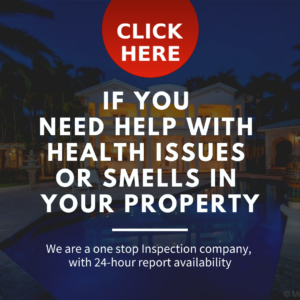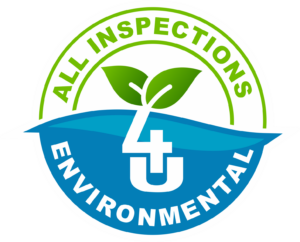Radon Testing

AVAILABLE SERVICE IN MIAMI, BROWARD & PALM BEACH COUNTIES
What is radon gas? Is it dangerous?
Radon is a naturally occurring radioactive gas that can cause lung cancer. Radon gas is inert, colorless, and odorless. Radon is naturally in the atmosphere in trace amounts. Outdoors, radon disperses rapidly and, generally, is not a health issue. Most radon exposure occurs inside homes, schools, and workplaces. Radon gas becomes trapped indoors after it enters buildings through cracks and other holes in the foundation. Indoor radon can be controlled and managed with proven, cost-effective techniques.
Breathing radon over time increases your risk of lung cancer. Radon is the second leading cause of lung cancer in the United States. Nationally, the EPA estimates that about 21,000 people die each year from radon-related lung cancer. Only smoking causes more lung cancer deaths.
You can take steps to reduce and control the amount of radon in your home. Testing is the only way to determine radon levels. Have your home tested, either by a professional or with a do-it-yourself home test kit. If radon levels are high, contact a certified radon service professional to fix your home. EPA guidance suggests mitigating if levels are at or above 148 Bq/m3 (4 pCi/L). Usually, radon problems are fixed using an underground ventilation system or by increasing the rate of air changes in the building.
Radon gas is an odorless, colorless, and tasteless radioactive gas that is formed during the natural breakdown of uranium in water, soil, and rock. Radon exits the ground and can seep into your home through holes and cracks in the foundation. Radon gas can also contaminate well water.
Health officials have determined that radon gas is a carcinogen that can cause lung cancer. Studies show that radon is a risk to smokers, but nonsmokers have a slightly elevated chance of developing lung cancer when radon levels in the home are high.
How Does Radon Affect Your Health?
When you breathe in radon, it gets into the lining of your lungs and gives off radiation. Over a long time, that can damage the cells there and lead to lung cancer.
Radon is the second biggest cause of lung cancer after cigarette smoking. If you breathe a lot of radon and smoke, your chance of getting lung cancer is very high.
About 21,000 people die each year from lung cancer related to radon. Some research has linked radon to other kinds of cancer, like childhood leukemia, but the evidence for that isn’t as clear.
What Are the Symptoms of Radon Exposure?
You won’t have symptoms of radon poisoning right away. Instead, health problems from the exposure, such as lung cancer, show up after many years.
Lung cancer may start as a nagging cough, shortness of breath, or wheezing that doesn’t go away. Other symptoms include coughing up blood, having chest pain, or losing weight without trying. If you notice any of these symptoms, call your doctor.
There are no routine medical tests that can tell you if you have breathed in too much radon. And no treatments will clear it from your body. But if you think you may have been exposed, talk to your doctor about whether you should have tests to check for signs of lung cancer.
Radon Gas is the second cause of lung cancer in the United States after smokers and the first cause for non-smokers.
School and Facility Testing
Radon and Indoor Air Program
Mandatory Radon Testing and Private School Sworn Compliance
*Note: This page contains materials in the Portable Document Format (PDF). The free Adobe Reader may be required to view these files.
As a condition of participating in state scholarship programs, private schools must complete an online Scholarship Compliance Form. This form is to confirm that all private schools that receive state funds have met all applicable regulations. Mandatory radon testing is one of those requirements.
The compliance confirmation includes a section on mandatory radon testing. and refers to “Mandatory Measurements Nonresidential Radon Measurement Report (Form DH1777 or Form DH1778), in accordance with s. 404.056, Florida Statutes, and 64E-5, Florida Administrative Code.” In discussions with Department of Education, it was determined that the schools must meet all the conditions of mandatory radon testing, if required to test. The testing requirement has changed since its original inception in 1989. Testing will depend on how old the school is or how recently any structural changes were made to school buildings. These requirements are building specific rather than campus specific.
All schools in all counties in continual use since before July 1st, 1994 must test.
There should be a record of at least two sets of testing. The first set of testing should be pre-July 1st, 1994, that includes tests of 100% of all first floor and below grade rooms, 20% of any second story rooms, and 10% of any third story rooms. Bathrooms, storage rooms and kitchens are excluded from testing. Hallways are excluded unless a seating area is designated in the hallway. The second set of testing would have been performed between July 1st, 1994 and June 30, 1999. For buildings with all results from the first round of testing below 4 pCi/l, there should be results for testing of 20% of the ground contact rooms. For buildings with results greater than or equal to 4 pCi/l during the first round of testing, there should be results for testing of 100% of the ground contact rooms. This is required of all schools in all counties. Testing is required in all counties.
School buildings opened between July 1st, 1994 and June 30th, 1999.
You should have Form DH1777 showing testing in 100% of all first floor and below grade habitable rooms. Bathrooms, storage rooms and kitchens are excluded from testing. Hallways are excluded unless a seating area is designated in the hallway. This is a requirement of all schools in all counties. There are no exemptions for any school buildings in continuous use since before July 1, 1999. Follow-up radon testing is required in school buildings in the counties where mandatory radon testing is required for post July 1st, 1999 buildings. The follow-up testing shall include 5% of ground contact rooms that students use in each building. These tests should be started after 5 years of occupancy and reported by the end of the sixth year.
For school buildings opened or structurally changed since July 1st, 1999.
You should have a Form DH1777 showing radon tests from a minimum of 20% of the ground contact rooms that would normally be used by students. Bathrooms, storage rooms and kitchens are excluded from testing. Hallways are excluded unless a seating area is designated in the hallway. This radon testing requirement is county specific and certain counties are currently exempt from radon testing. See the current mandatory testing information for more details and exclusions. After five years of occupancy, 5% of the rooms used by students shall be retested. Thus, a school that opened September 1st, 1999 shall perform retesting after September 1st, 2004 and have it reported to this office by September 1st, 2005.
If your facility failed to comply with the mandatory testing, or no proof can be found to verify compliance, you must complete radon testing in accordance with the following:
For school buildings in continual use since before July 1st, 1994.
Radon testing of all buildings is required statewide. If no testing was performed, immediately complete 100% testing of ground contact rooms in each building. These rooms will include all rooms that students would be expected to use or visit as part of their normal school experience. Classrooms, offices, fellowship halls, cafeteria, gymnasiums, and clinics are the types of rooms to include. Bathrooms, kitchens, storage, teacher lounges are excluded. Hallways are excluded unless a designated seating area is in the hallway. Schedule to perform retesting after five years based on the results of the initial testing. 100% of ground contact floors shall be tested in buildings with results greater than or equal to 4 pCi/l, and 20% of ground contact floors in buildings with all radon test results less than 4 pCi/l. If only initial radon testing was completed, perform retesting based on the results of the initial testing as specified in the previous paragraph.
School buildings opened between July 1st, 1994 and June 30th, 1999.
Radon testing of all buildings is required statewide. If no testing was performed, immediately complete 100% testing of ground contact rooms in each building. These rooms will include all rooms that students would be expected to use or visit as part of their normal school experience. Classrooms, offices, fellowship halls, cafeteria, gymnasiums, and clinics are the types of rooms to include. Bathrooms, kitchens, storage, teacher lounges are excluded. Hallways are excluded unless a designated seating area is in the hallway.
If your school is in a county where radon testing is required of post July 1st, 1999 buildings, a follow-up test will be required. Schedule for 5% of the ground contact students used rooms to be tested in each building. This testing shall be performed after five years from the date of the first tests. They should be reported by the end of the sixth year after the date of the tests. If the initial 100% testing was completed, but the retesting was not performed, perform the 5% retest now if it has been five years since the first tests.
School buildings opened or structurally changed since July 1st, 1999.
Radon testing is required in selected counties. If you are required to test the building, enough rooms shall be tested to include at least 20% of the ground contact rooms in each building. These rooms will include all rooms that students would be expected to use or visit as part of their normal school experience. Classrooms, offices, fellowship halls, cafeteria, gymnasiums, and clinics are the types of rooms to include. Bathrooms, kitchens, storage, teacher lounges are excluded. Hallways are excluded unless a designated seating area is in the hallway. Five percent of the rooms in these facilities must be retested five years later. See the current mandatory radon testing information for more details.
https://content.govdelivery.com/accounts/USEPAIAQ/bulletins/2ae022b
WHY CHOOSE US FOR THIS SERVICE?
By collecting samples and sending them to a third-party laboratory we will provide accurate results certified by a qualified laboratory provider and provide the customer with written reports and recommendations. By determining the levels of radon gas we will be able to recommend (if necessary) mitigation procedures for lowering the levels to prevent risk of lung cancer.
“We provide service to relocation companies – contact us for more information”
RADON INSPECTION 
Mandatory Measurements
> FORM: RESIDENTIAL RADON MEASUREMENT REPORT
For buildings built as and used as a home or apartment
> FORM: NONRESIDENTIAL RADON MEASUREMENT REPORT
For buildings other than single or multi family dwelling
> Map of Radon Zones in Florida Based on (EPA)
> A Citizens Guide to Radon
> Consumer’s Guide to Radon Reduction
> Home Buyer’s and Seller’s Guide to Radon
To schedule an inspection, call (954) 802-8524
Call (954) 802-8524
SCHEDULE AN INSPECTION TODAY


